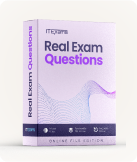Juniper JN0-664 - Service Provider Routing and Switching, Professional (JNCIP-SP) Exam
Page: 2 / 20
Total 96 questions
Question #6 (Topic: Exam A)
Click the Exhibit button.

Referring to the exhibit, which two statements are true? (Choose two.)

Referring to the exhibit, which two statements are true? (Choose two.)
A. The devices advertising this route into EVPN are 10.0.2.12 and 10.0.2.22.
B. This route is learned through EBGP.
C. The device advertising this route into EVPN is 192.168.101.5.
D. This is an EVPN Type-2 route.
Answer: CD
Question #7 (Topic: Exam A)
Click the Exhibit button.

You are running a service provider network and must transport a customer's IPv6 traffic across your IPv4-based MPLS network using BGP. You have already configured mpls ipv6-tunneling on your PE routers.
Which two statements are correct about the BGP configuration in this scenario? (Choose two.)

You are running a service provider network and must transport a customer's IPv6 traffic across your IPv4-based MPLS network using BGP. You have already configured mpls ipv6-tunneling on your PE routers.
Which two statements are correct about the BGP configuration in this scenario? (Choose two.)
A. You must configure family inet6 labeled-unicast between PE routers.
B. You must configure family inet6 add-path between PE and CE routers.
C. You must configure family inet6 unicast between PE and CE routers.
D. You must configure family inet6 unicast between PE routers.
Answer: AC
Question #8 (Topic: Exam A)
When using 0SPFv3 for an IPv4 environment, which statement is correct?
A. OSPFv3 only supports IPv4.
B. OSPFv3 is not backward compatible with IPv4.
C. OSPFv3 supports both IPv6 and IPv4, but not in the same routing instance.
D. OSPFv3 supports IPv4 only on interfaces with family inet6 defined.
Answer: C
Question #9 (Topic: Exam A)
You are a network architect for a service provider and want to offer Layer 2 services to your customers. You want to use EVPN for Layer 2 services in your existing MPLS network.
Which two statements are correct in this scenario? (Choose two.)
Which two statements are correct in this scenario? (Choose two.)
A. Segment routing must be configured on all PE routers.
B. EVPN uses Type 2 routes to advertise MAC address and IP address pairs learned using ARP snooping.
C. EVPN uses Type 3 routes to join a multicast tree to flood traffic.
D. VXLAN must be configured on all PE routers.
Answer: BC
Question #10 (Topic: Exam A)
You are configuring a Layer 3 VPN between two sites. You are configuring the vrf-target target: 65100:100 statement in your routing instance.
In this scenario, which two statements describe the vrf-target configuration? (Choose two.)
In this scenario, which two statements describe the vrf-target configuration? (Choose two.)
A. This value is used to identify BGP routes learned from the remote PE device.
B. This value is used to add a target community to BGP routes advertised to the local CE device.
C. This value is used to add a target community to BGP routes advertised to the remote PE device.
D. This value is used to identify BGP routes learned from the local CE device.
Answer: AC
